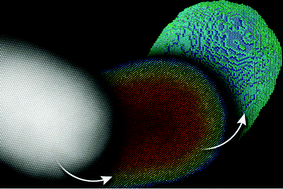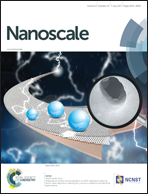Three-dimensional atomic models from a single projection using Z-contrast imaging: verification by electron tomography and opportunities†
Abstract
In order to fully exploit structure–property relations of nanomaterials, three-dimensional (3D) characterization at the atomic scale is often required. In recent years, the resolution of electron tomography has reached the atomic scale. However, such tomography typically requires several projection images demanding substantial electron dose. A newly developed alternative circumvents this by counting the number of atoms across a single projection. These atom counts can be used to create an initial atomic model with which an energy minimization can be applied to obtain a relaxed 3D reconstruction of the nanoparticle. Here, we compare, at the atomic scale, this single projection reconstruction approach with tomography and find an excellent agreement. This new approach allows for the characterization of beam-sensitive materials or where the acquisition of a tilt series is impossible. As an example, the utility is illustrated by the 3D atomic scale characterization of a nanodumbbell on an in situ heating holder of limited tilt range.

- This article is part of the themed collection: Celebrating Excellence in Research: Women of Materials Science


 Please wait while we load your content...
Please wait while we load your content...